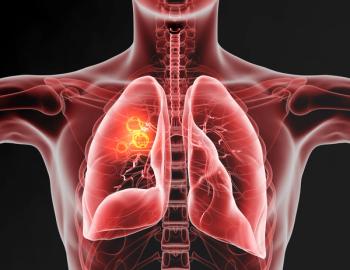
Study Estimates the Hidden Burden of Adult RSV Hospitalizations
New research highlights the significant health risks of respiratory syncytial virus (RSV) in older adults, emphasizing the need for effective vaccines and public health strategies.
Respiratory syncytial virus (RSV) in adults signifies a significant and underestimated public health burden due to challenges of underdiagnosis, stemming from nonspecific symptoms and limitations in testing. To provide further research and understanding on this burden, investigators conducted a study using clinical data to introduce a novel approach for estimating adult RSV-related hospitalizations. The findings, which were published in The Lancet, identified significant relationships between RSV activity and increased respiratory and cardiorespiratory hospitalizations among adults.1
Severity of RSV in Adults
RSV can be especially dangerous for older adults and those with chronic medical conditions who are frail or live in a nursing home. The CDC estimates that each year, approximately 60,000 to 160,000 older adults are hospitalized due to RSV, accounting for 6000 to 10,000 deaths. The infection presents mild, cold-like symptoms that appear 4 to 6 days after exposure. Symptoms may include a congested or runny nose, dry cough, low-grade fever, sore throat, sneezing, and headache, whereas symptoms for severe infection include fever, severe cough, wheezing, rapid breathing or difficulty breathing, and bluish color of the skin.2
Study Methods and Findings
For the study, the researchers collected clinical data from hospital statistics and insurance claims on respiratory and cardiorespiratory hospitalizations for RSV among individuals aged 18 to 59 years, 60 to 70 years, and individuals 75 years and older in 15 countries from 1992 to 2021, including Argentina, Brazil, Canada, Chile, Georgia, Germany, Greece, Ireland, Italy, Japan, Mexico, New Zealand, Poland, Spain, and the US. Additionally, the researchers used methods from the Global Burden of Disease (GBD) study, focusing on the comparative risk assessment framework.1
The study employed generalized additive models to determine the relationship between RSV activity and hospitalizations from 2015 to 2019. The models accounted for trend, seasonality, meteorological influences, and influenza activity. Following, they calculated the population attributable fraction (PAF), along with the resulting RSV-attributable hospitalizations, according to investigators.1
The results demonstrated a significant relationship between RSV activity and increased respiratory and cardiorespiratory hospitalizations among adults. The rates of RSV-attributable hospitalizations and PAFs varied across the different age groups and countries. Specifically, individuals 75 years and older experienced the highest annual RSV-attributable hospitalization rates, ranging from 110.9 per 100,000 population in Argentina to a high of 1100.8 per 100,000 for cardiorespiratory hospitalizations in New Zealand. Conversely, the lowest RSV-attributable hospitalizations for both respiratory and cardiorespiratory diseases were demonstrated in adults aged 18 to 59 years who resided in Spain, with a rate of 5.0 hospitalizations per 100,000 when using the hospital-based proxy.1
The findings emphasize the burden of RSV infection and provide data on RSV incidence globally, providing further research for pharmacists and health care providers when making interventions and vaccine decisions for adults at risk for RSV.1
“By leveraging high-quality surveillance data from 2015 onwards and adopting a comprehensive hospitalization analysis, our study provides a nuanced understanding of RSV's impact on both respiratory and cardiorespiratory diseases. This holistic perspective is crucial for informing public health strategies—particularly whether and how to use new interventions—and advancing our knowledge of RSV's broader health implications,” the study authors concluded.1
REFERENCES
1. Burkart K, Liang C, Rafferty Q, Gillespie C, McLaughlin S, Oros A. Respiratory syncytial virus-attributable hospitalizations among adults in high- and middle-income countries: application of the Global Burden of Disease framework. The Lancet. July 2025. doi:10.1016/j.eclinm.2025.103292
2. CDC. RSV in older adults. August 30, 2024. Accessed June 12, 2025. https://www.cdc.gov/rsv/older-adults/index.html#:~:text=RSV%20can%20be%20dangerous%20for,disease%20get%20an%20RSV%20vaccine.
Newsletter
Stay informed on drug updates, treatment guidelines, and pharmacy practice trends—subscribe to Pharmacy Times for weekly clinical insights.

















































































































































































































